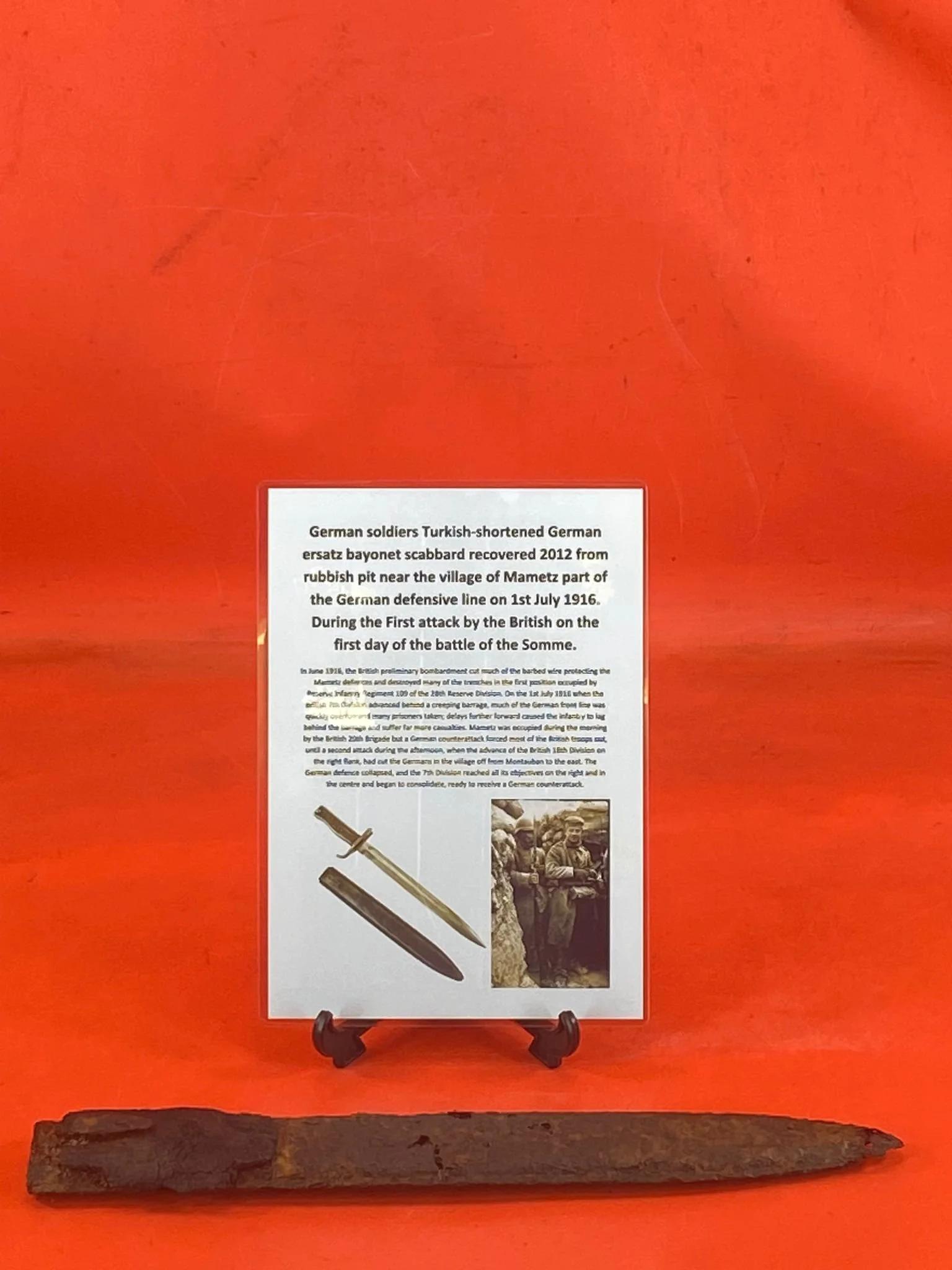 Image 1 of 10
Image 1 of 10

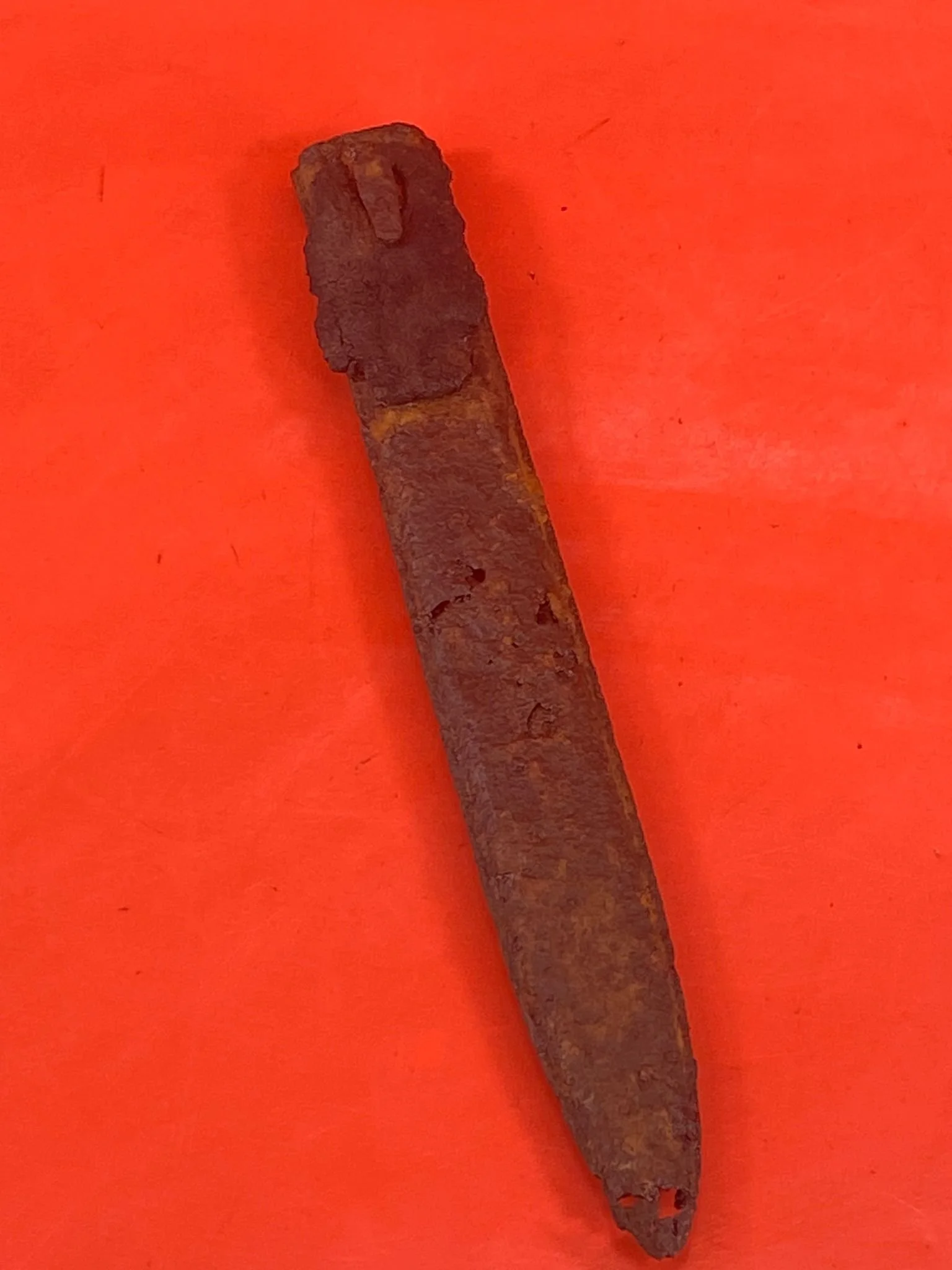 Image 2 of 10
Image 2 of 10

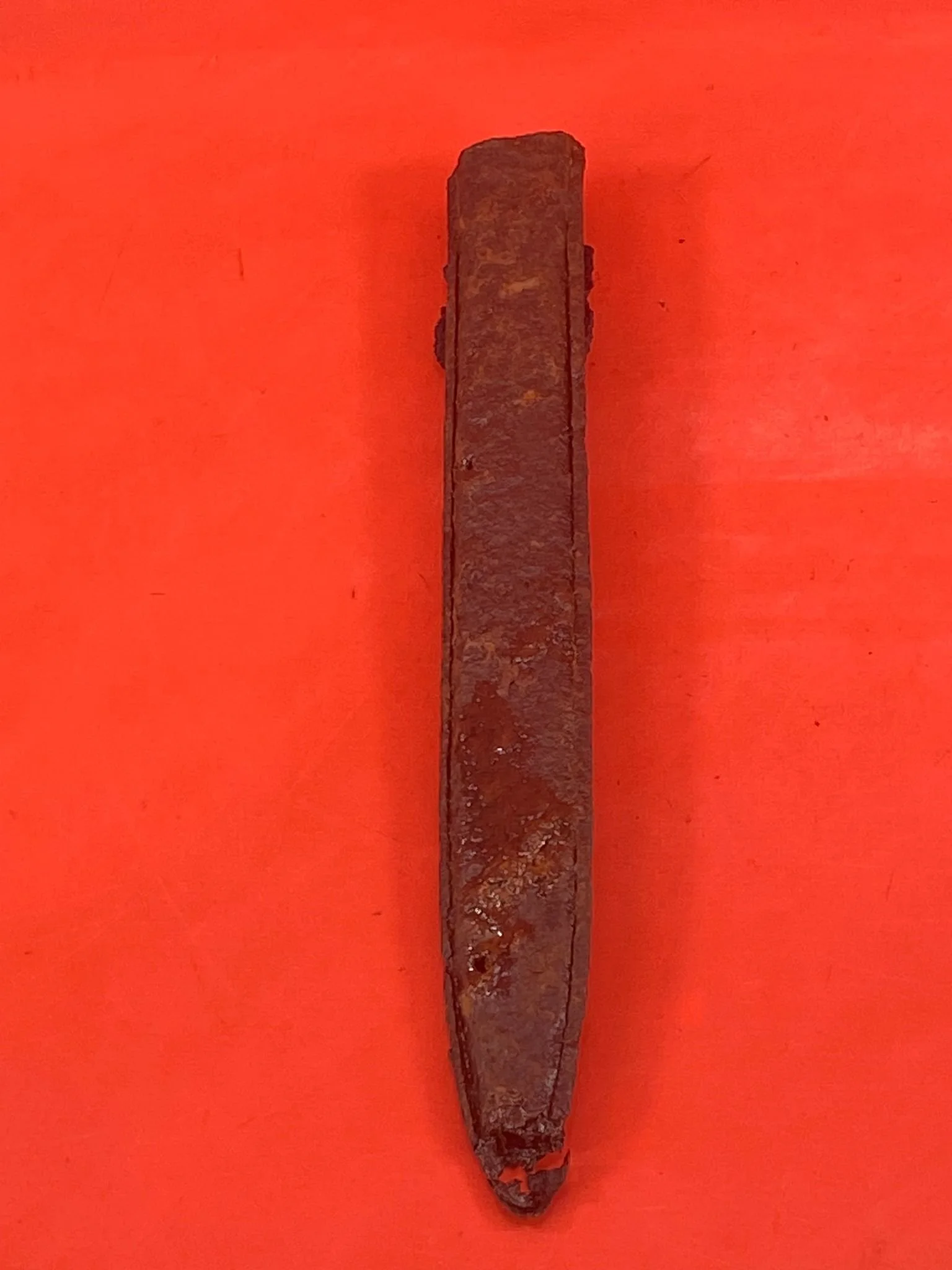 Image 3 of 10
Image 3 of 10

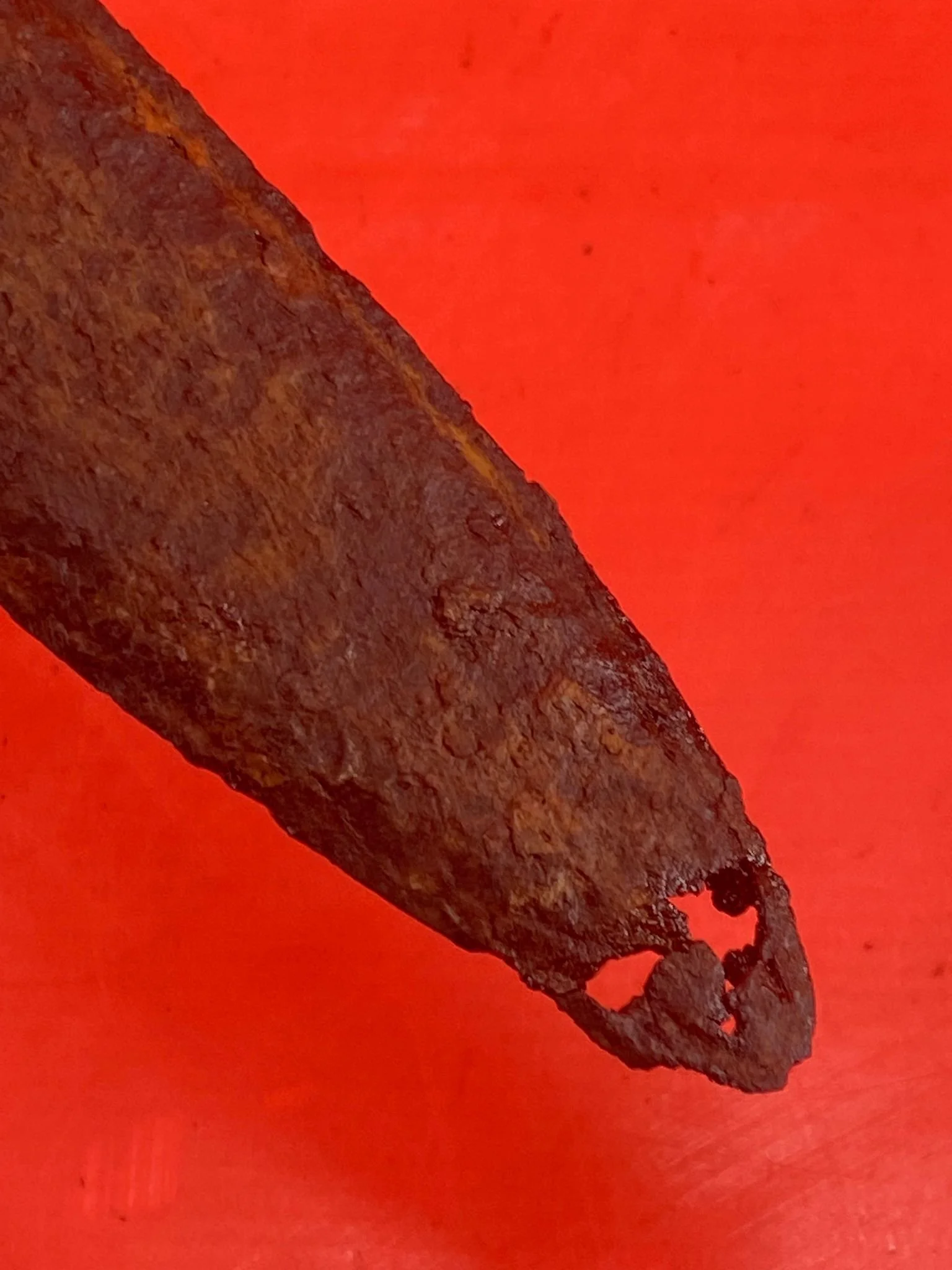 Image 4 of 10
Image 4 of 10

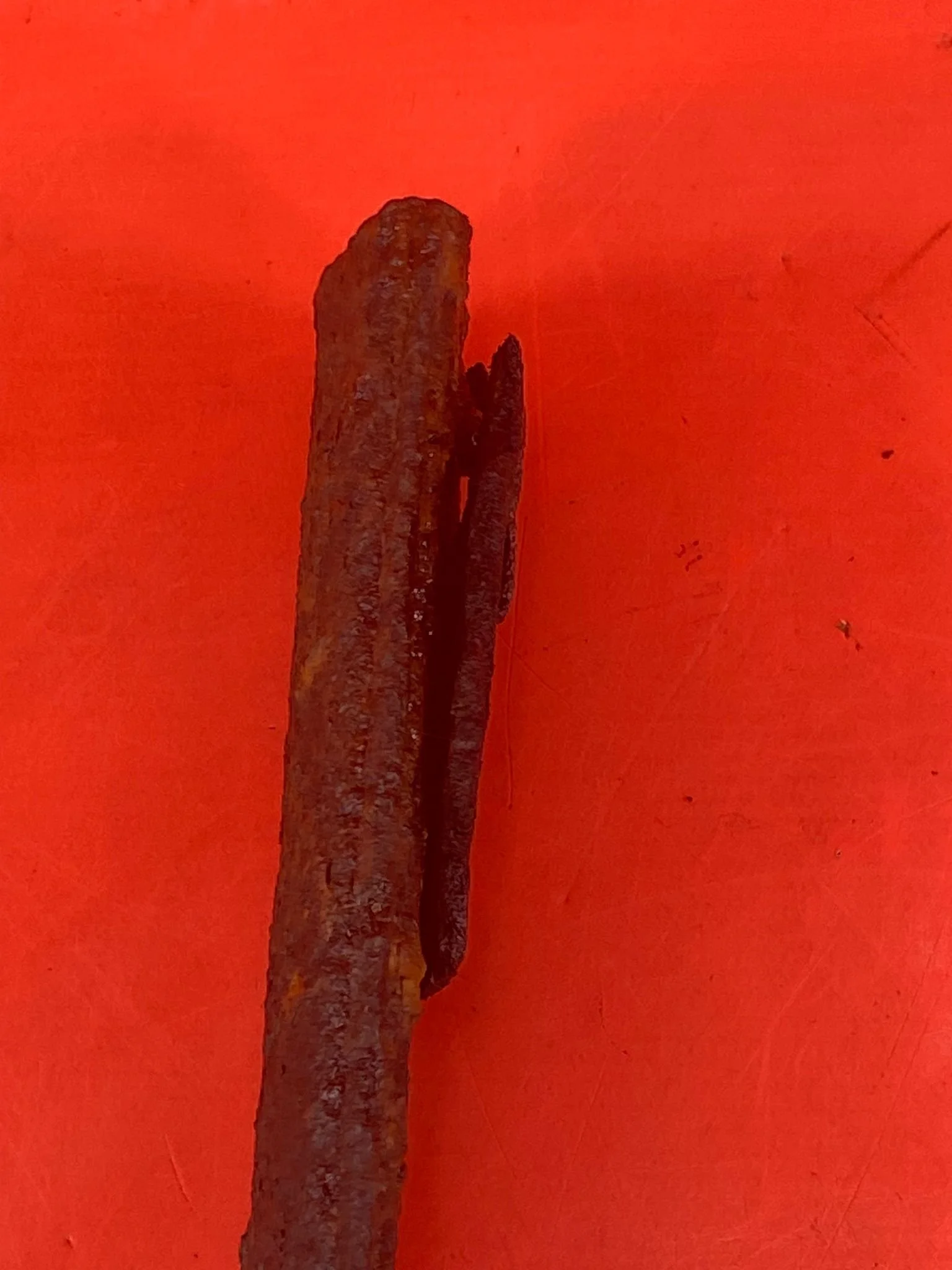 Image 5 of 10
Image 5 of 10

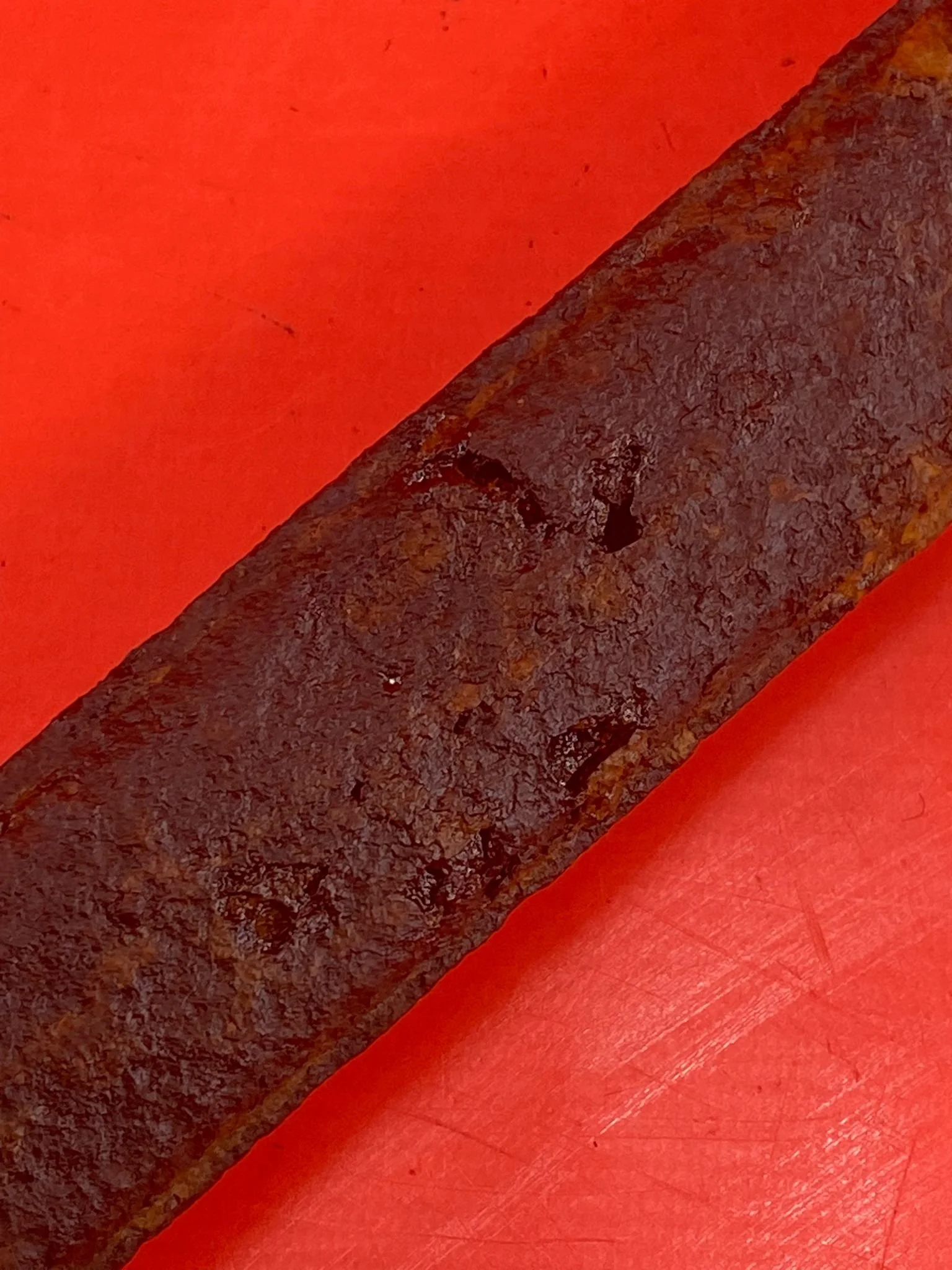 Image 6 of 10
Image 6 of 10

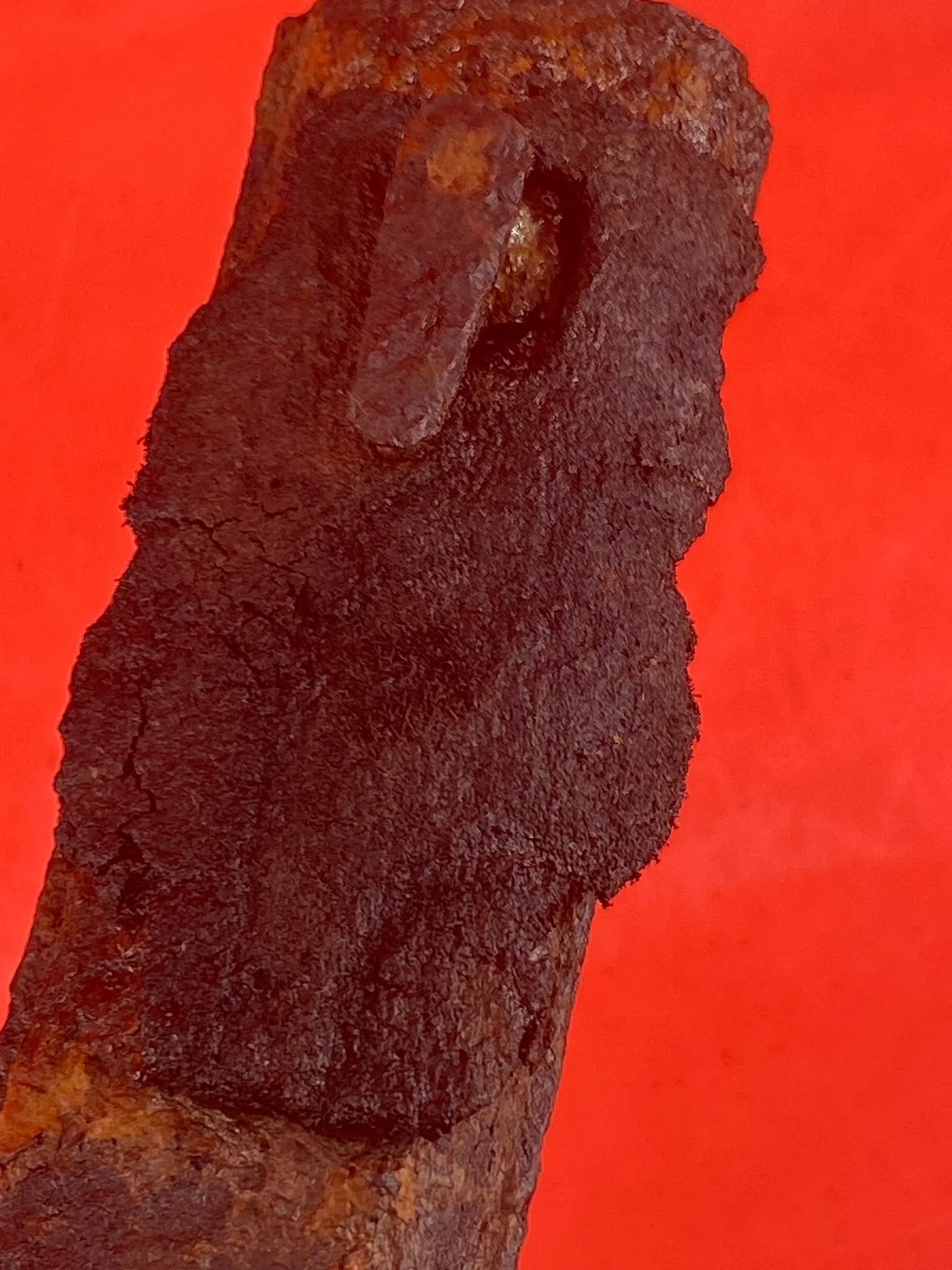 Image 7 of 10
Image 7 of 10

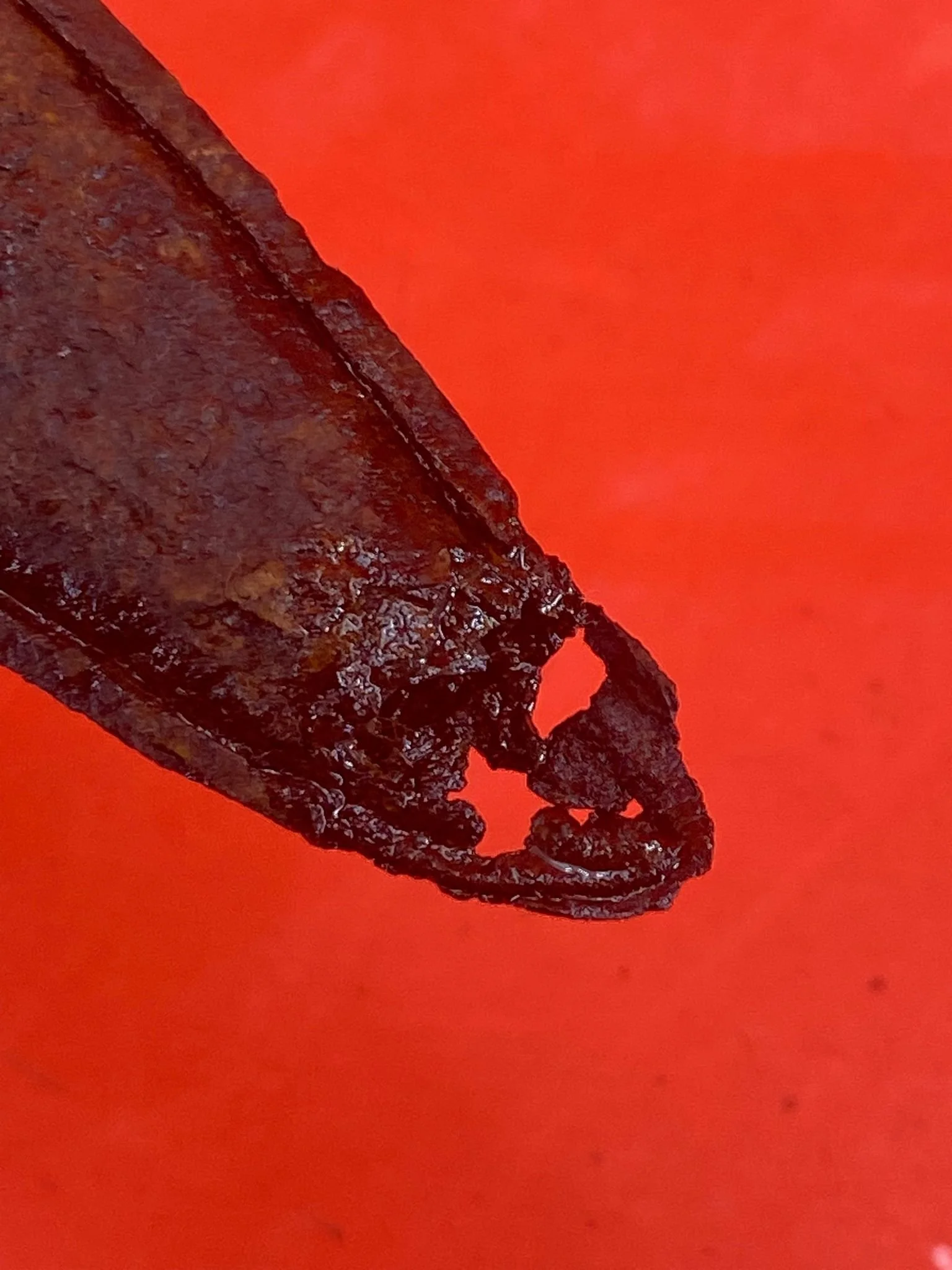 Image 8 of 10
Image 8 of 10

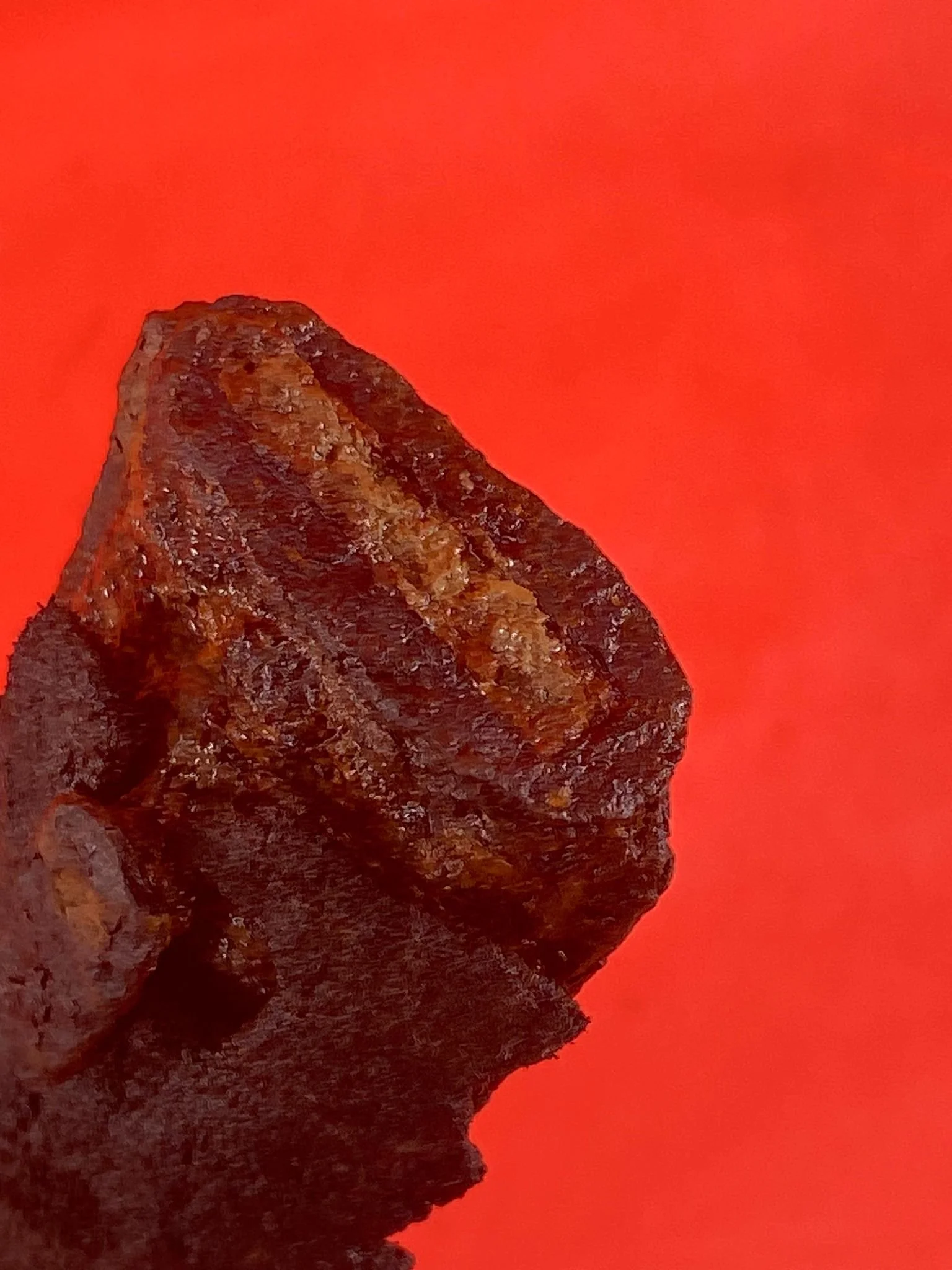 Image 9 of 10
Image 9 of 10

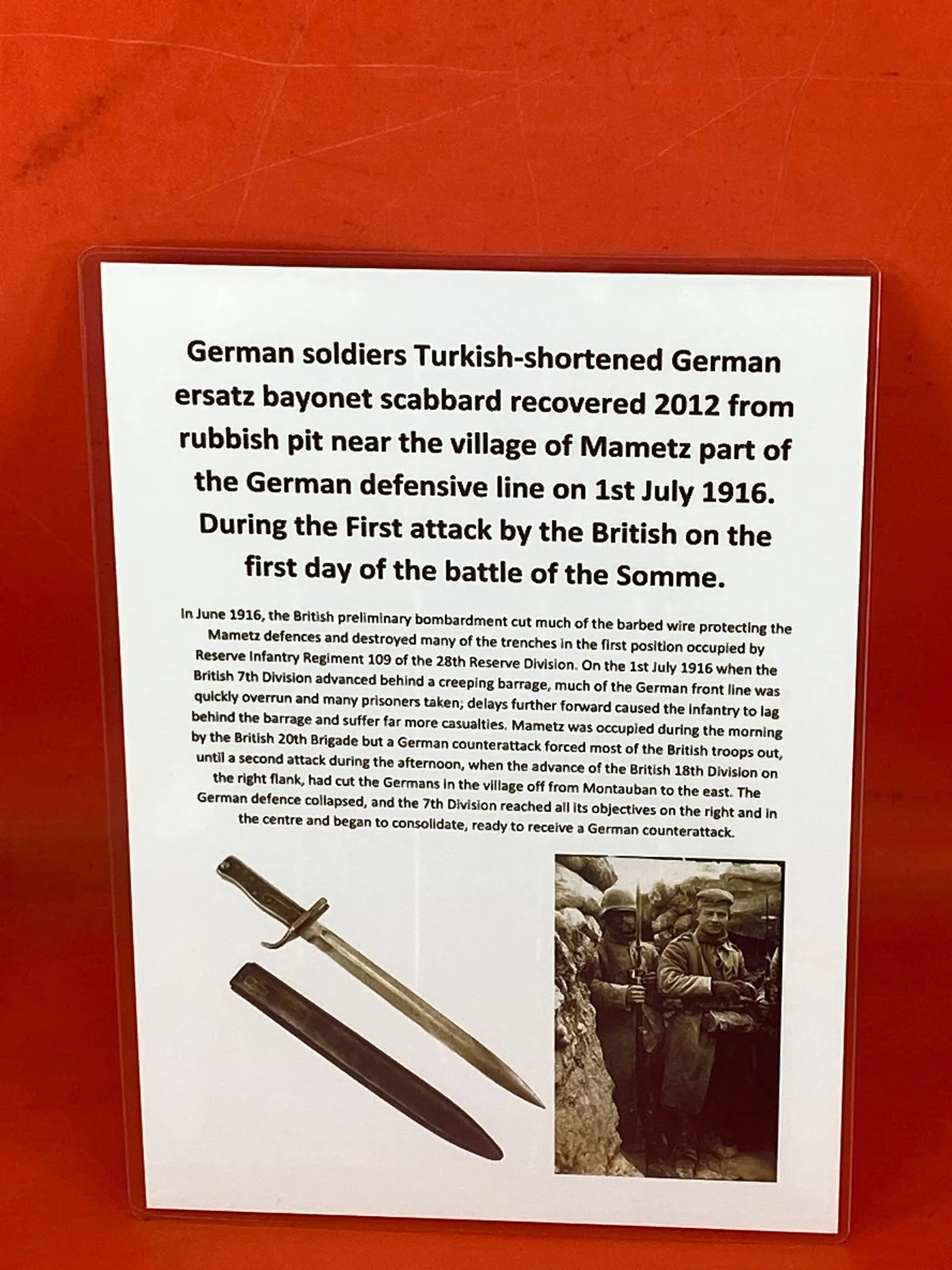 Image 10 of 10
Image 10 of 10











German soldiers Turkish shortened ersatz bayonet scabbard with frog remains recovered 2012 near village of Mametz on Somme battlefield
This is a rare and hard-to-find German soldiers unmodified ersatz bayonet scabbard, still retaining small remains of its original leather frog. The scabbard is in relic condition, with no remaining paintwork, some surface rust, a few small rust holes, and minor damage but it remains very solid, not breaking up or falling apart.
It has been carefully cleaned and is ideal for display or inclusion in any WWI collection. Scabbards like this are especially rare as battlefield finds due to their thin metal construction, which typically corroded completely over time. This example has survived remarkably well.
The scabbard was recovered in 2012 from a refuse pit near the village of Mametz, which formed part of the German defensive line on 1st July 1916, the first day of the Battle of the Somme. It comes complete with a laminated A5 information sheet, including historical background and photos of the area.
Historical Context Mametz, July 1916:
In June 1916, British artillery bombardments had already cut much of the barbed wire protecting the Mametz defences, destroying trenches held by Reserve Infantry Regiment 109 of the 28th Reserve Division.
On 1st July 1916, the British 7th Division advanced under a creeping barrage. The initial attack quickly overran much of the German front line, resulting in the capture of many prisoners. However, delays further ahead caused the infantry to fall behind the barrage and suffer increased casualties.
Mametz was captured in the morning by the British 20th Brigade, but a German counterattack temporarily forced the British back. A renewed assault later in the afternoon supported by the 18th Division advancing on the right flank cut off German forces in the village from Montauban to the east. The German line collapsed, and the 7th Division secured all its objectives, preparing to hold off any counterattacks
This is a rare and hard-to-find German soldiers unmodified ersatz bayonet scabbard, still retaining small remains of its original leather frog. The scabbard is in relic condition, with no remaining paintwork, some surface rust, a few small rust holes, and minor damage but it remains very solid, not breaking up or falling apart.
It has been carefully cleaned and is ideal for display or inclusion in any WWI collection. Scabbards like this are especially rare as battlefield finds due to their thin metal construction, which typically corroded completely over time. This example has survived remarkably well.
The scabbard was recovered in 2012 from a refuse pit near the village of Mametz, which formed part of the German defensive line on 1st July 1916, the first day of the Battle of the Somme. It comes complete with a laminated A5 information sheet, including historical background and photos of the area.
Historical Context Mametz, July 1916:
In June 1916, British artillery bombardments had already cut much of the barbed wire protecting the Mametz defences, destroying trenches held by Reserve Infantry Regiment 109 of the 28th Reserve Division.
On 1st July 1916, the British 7th Division advanced under a creeping barrage. The initial attack quickly overran much of the German front line, resulting in the capture of many prisoners. However, delays further ahead caused the infantry to fall behind the barrage and suffer increased casualties.
Mametz was captured in the morning by the British 20th Brigade, but a German counterattack temporarily forced the British back. A renewed assault later in the afternoon supported by the 18th Division advancing on the right flank cut off German forces in the village from Montauban to the east. The German line collapsed, and the 7th Division secured all its objectives, preparing to hold off any counterattacks
